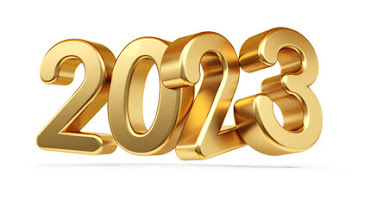SHIPS ON GLASS - PRIVATEERS AND MERCHANT ADVENTURERS AT BONHAMS SALE OF BRITISH GLASS
Two 18th century wine glasses that recall English and Dutch ships with colourful histories will be sold at Bonhams Fine Glass Sale on December 16 in London.
These beautiful images remain engraved on the glass long after the ships themselves were lost. But the value of these two special wine goblets may have surprised the ships captains ranging as they do between estimates of £7,000 to £12,000.
Simon Cottle, Head of Glass at Bonhams, comments: “These beautifully engraved glasses bearing Images of great ships will always carry with them something of the allure of life at sea during a more robust age in which setting off for foreign parts was a risky undertaking. Something perhaps to reflect on carefully as one stared into a glass of good claret.”
Lot 98 is a rare engraved opaque-twist Privateer wine glass circa 1757 with a slightly waisted bowl decorated with a ship’s portrait, inscribed `Success to the Famous TYGER Privateer’. It is estimated to sell for £7,000-9,000.
The Tyger, a ship of 560 tons, mounted with 30 guns and with a crew of 300 men was the only privateer to earn the contemporary title of 'famous'. Her exploits are recorded both in the Daily Advertiser and the London Chronicle.
She was built by the French. During the war of the Austrian Succession and was captured by HMS Falkland. In October 1747, under the command of Capt. James Seix. The ship went on to capture the Nuestra Senora Vegonia, a Spanish privateer credited with the capture of no fewer than 120 British vessels.
The next year, 1748, was quite as successful, with captures including the Santa Theresa, thought to be worth some £40,000. The Tyger was rebuilt in Bristol in 1749 and again commissioned on the outbreak of the Seven Years' War in 1756 under the command of Capt. Peter Griffin. In August the French ships Nestor and Conte de Noailles were captured. A further Declaration was made on 5 July 1757, this time by Capt. John Neilson. In the following February Tyger took a 12-gun French privateer, but after a two-hour engagement was soon captured herself by the French man-of-war Rose.
She was taken into Malta, reappearing on 30 January 1762, now under the command of de Fabry, who sustained a three-hour action with HMS Danae. On 4 April 1762, she was taken by the King George privateer and the following February was put up for sale thus ending her career as a privateer.
A second ship engraved glass is Lot 165, a fine Dutch East India Company goblet circa 1770 attributed to Jacob Sang. The large round funnel bowl wineglass is finely engraved with a three-masted sailing ship, the rear pennant inscribed with the monogram A/VOC, the ship inscribed HOLLAND, the reverse with mirror monogram within an elaborate cartouche formed of naval trophies, inscribed HET WELVAAREN VAN 'T SCHIP HOLLAND. It is estimated to sell for
£8,000-12,000.
The title of the ship is either commemorative of an historical event or is a symbol of the Dutch nation. There is one vessel which bears the name Holland recorded in The Dutch East India Company's shipping registers between the Netherlands and Asia 1595-1795.
According to the register the `Holland’ was built in Amsterdam in 1771, with a tonnage of 1150. Between November 1772 and July 1784 she made five voyages from the island of Texel in North Holland to Batavia and Ceylon with five respective masters - Hans Hansen, Hendrik Willemse, Benjamin van der Spek, Isaac de Vries and Lars Jansen. Dr. Joost Schokkenbroek, the Chief Curator of the Netherlands Shipping Museum in Amsterdam, has indicated that the vessel depicted on the present lot appears to be of large size and might reflect the 1150 tonnage of the East Indiaman ship recorded of this name.
Though unsigned, from the high quality of the engraving, lettering and style, the engraver of this glass is likely to be Jacob Sang (active from 1752, died 1785 PERHAPS THE GREATEST DUTCH MASTER ENGRAVER OF THE 18TH CENTURY.





























































































